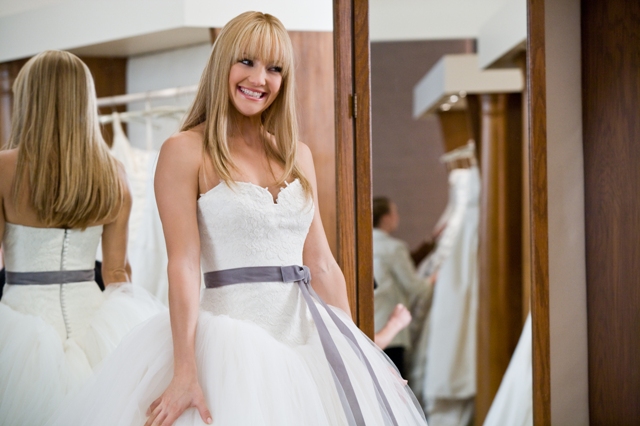Finding Your Perfect Dress: Part III
/Ok, here it is! The final installment of Finding Your Perfect Dress! Like everything else about your wedding, it's all about the timing!
Make sure to check out Part I and Part II if you haven't seen them yet! Thank you so much to The Knot for having this wonderful article available online as a great resource!
When to Begin
[ ] Choose the time of day and formality of your wedding before you set foot in a store.
[ ] Start learning the ins and outs of wedding gowns. Get the lingo down and determine which design elements will complement your body.
[ ] Hone in on a specific style. Browse through the thousands of options on The Knot Wedding Dress Search to find designers and styles you like. Save some of your favorites and print them out. Jot down a few names and gown elements that you find especially appealing.
[ ] Now get some paper and a pencil and put into words what you absolutely do not want in a gown (for example, short sleeves, a full skirt, or beading).
[ ] Determine your gown budget -- a good guideline is to spend 10% of your overall wedding budget.
[ ] Find two or three salons that suit you. Ask recently married friends where they bought their gowns and whether they had a good experience. Check to see which salons carry the designers you like. Call and make appointments, allowing at least one hour at each salon. Use a notebook to keep track of the salons, addresses, dates, and times.
[ ] Decide who to bring and invite them along. Limit your entourage to no more than three oglers at once.
[ ] Get your gear ready. Many salons provide some of the essentials listed below, but they may not fit properly:
-A strapless bra or bustier
-A slip if you plan to try on sheaths or slip dresses
-Shoes with approximately the same heel height you plan to wear on your wedding day
-Tissues for when your mom sees you in your first gown
[ ] As you shop take careful notes on the dresses and the designers you like and write down descriptions of the gowns with prices.
[ ] A few words on sizing: Wedding gowns can run small. The store will measure your bust, waist, and hips, consult the individual manufacturer's sizing chart, and order the size that matches your largest measurement (it's much easier and less expensive to take in a dress than to let it out).
[ ] At the salon, ask if the gown has coordinating accessories (veil or shawl) and try them on, too. Don't feel pressured to order anything: You still have time to look elsewhere for accessories.
-designer name
-style number or name
-size or measurements the salon is sending to the manufacturer
-approximate delivery date
-how many fittings are included in the price (if any)
-how much money you still owe for the gown
-amount of your deposit and that it's marked paid
[ ] Call the salon to confirm the delivery date.
[ ] Decide what accessories -- shoes, lingerie, jewelry, headwear, wrap, gloves, outerwear, and bag -- you need (or want!) and shop for them. For ideas, check out The Knot Accessory Search.
[ ] If you plan to lose weight before your wedding, do so before your fittings begin. Once fittings are underway, try to maintain your weight. (Better yet, forget about the diet -- obviously he thinks you look great just the way you are.)
[ ] Have your second fitting. Make sure that:
[ ] Bring your maid of honor to your final fitting to learn about the gown. Does it need bustling? Ask the salesperson to teach her how to do it. Does it have complicated straps or buttons? Make sure she knows how to work them. Also, find out how to banish last-minute wrinkles. Should you use an iron? On what setting? Is steaming a better option? And what if you spill something on the gown? Are there certain products you should or shouldn't use?
[ ] Pick up your gown!




